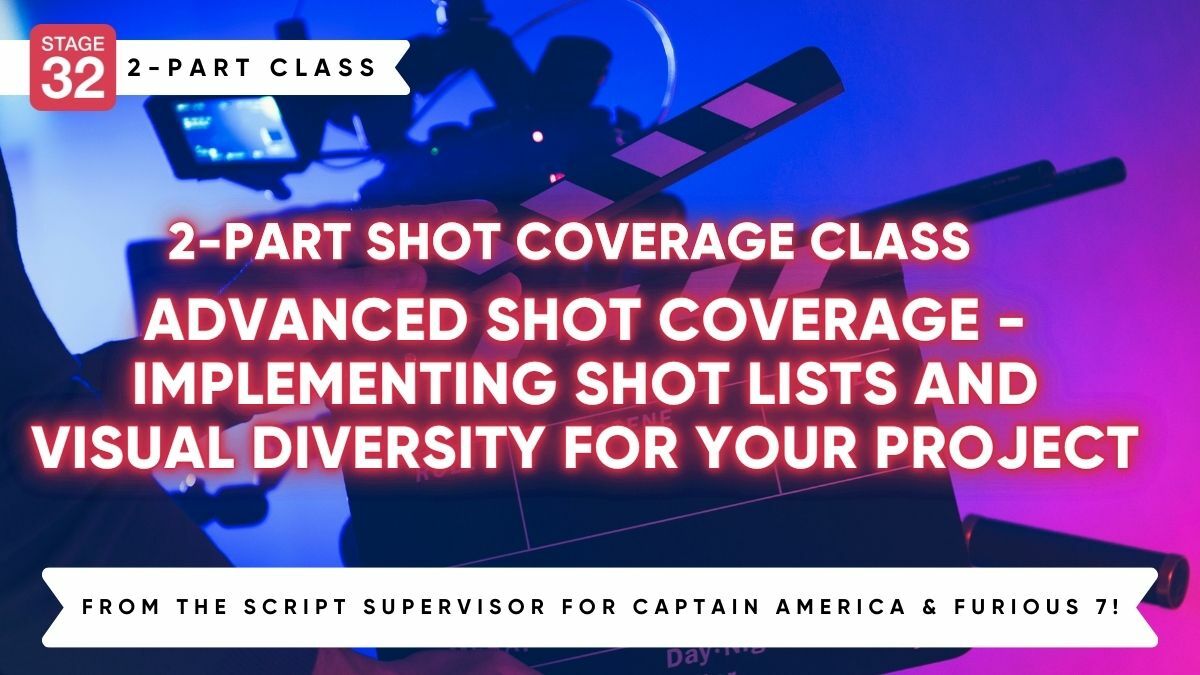Hello everyone, I am facing a big "cut to" problem and would really appreciate some opinions. Firstly, should I even use CUT TO at all? This is really contentious and many different opinions seem to exist. Secondly (and if so) where do I position it - to the left or to the right. Thirdly, can I use CUT TO as a direction within scenes? I ask because I have one long scene towards the end where are all the characters come together in one place for a showdown. They are clumped in 3/4 different groups inside a large hall, so the CUT TO is used to switch between the action and dialogue in different groups. If I do not use CUT TO, should I simply leave it to the reader to remember that, for example, a certain character is not sat next to this character, etc? Finally, I almost never use it between scenes - the only exception is a title sequence that relies upon fast cuts and direct linking between different images and scenes. If I don't use CUT TO, what can i use? Many thanks in advance for the help. P



2 people like this
I've never used "CUT TO"". When I write and have quick cuts between locations/characters that are close but not next to each other, I use the location or character name as a slug line.
BAR
The sheriff drinks a shot.
DOOR
The outlaw steps in.
It seems cleaner and more professional to me.
3 people like this
Hi Peter. You're gonna hear "never use CUT TO in spec script." But well placed... it can be used to great comedic or dramatic effect. However without specific context it's hard to say. Reading over your post... Perhaps headings (sluglines) and secondary headings would work just fine? Or perhaps INTERCUT? Perhaps look for examples, see how something similar is handled on the page.
3 people like this
Hi Peter, I use CUT TO: sparingly and as Beth suggested, for dramatic effect. As for its placing in the script, in Final Draft the CUT TO is aligned right when using the Transition Element.
2 people like this
Experienced Readers don't even pay attention to CUT TO on the page.
2 people like this
Hi Peter. You've raised some great questions.
1.) The general consensus is to avoid transitions such as CUT TO:, DISSOLVE TO: SMASH CUT TO:, etc. and use only sparingly and when absolutely necessary. There are two reasons for this: A) overuse suggests the writer is telling the director/editor how to complete the movie and B) interrupt the flow and affect the suspension of disbelief for the reader.
2.) If you need to insert a transition into your script, it would right justified.
3.) Transitions can be used within scenes but typically are used to transition from one scene to the next. As has already been suggested, you can use an INTERCUT instead or perhaps a SERIES OF SHOTS. It will ultimately come down to how you want the scene to unfold and what's the most compelling choice.
As an exercise, you may want to read the scene aloud several times, with and without the CUT TO's to gauge if it works or is cumbersome.
Hope this helps.
Shaun
2 people like this
I'm a reader. If you feel we will not understand where the action is taking place then "CUT TO:" may be needed. Most of the time there are creative ways to orient the reader. I personally prefer the creative approach when I'm reading. But it's not a deal breaker.
I disagree with Dan. As an experienced reader I pay attention to everything on the page. Where a writer uses editing or camera cues is important to them so it's important to me as the reader. Some use it for dramatic effect (as Beth and Geoff mention) so it's important. That's why many of us caution writers on its use. Use it when there is no other way to get your story across but be careful; we are reading your script for your story and characters NOT for your editing suggestions for the finished product.
2 people like this
Generally, transitions go up against the right margin. Spec scripts ought not use them. As a reader, the less little stumbling blocks to your story flow - the better
1 person likes this
Never used 'CUT TO' myself, Peter. When u get a chance, pick up a SCREENWRITERS' BIBLE for current spec market rules, formatting, etc. It's an A1 book. Gotta have it
1 person likes this
Every scene heading is a cut to so no need to use them. In the middle of the scene you just start a new paragraph which is like a cut to. Y don't need them so don't bother.
1 person likes this
Peter, you should also give Final Draft (my preference) screenwriting software a try. It explains everything and I have been using it for close to 18 years! Also, it automatically formats and positions the CUT TO and FADE TOs to the right - for when you do use them. Might seem costly to some, but for me - personally - it's been worth it's weight in gold! ;)
From the description you gave of the scene it sounds like it takes place in several locations within one scene. If that is the case you would be better off using SCENE SUB-HEADING to move around. Here is an example.
INT. GALLO RESTAURANT - NIGHT
Tim sips a beer at the bar. He eyes two ladies at a table across the room.
AT THE TABLE
Ann whispers to Jane and they giggle.
BACK AT THE BAR AREA
Tim flags the bartender for another beer.
Every scene heading is a new camera location/view. How the Director & Editor choose how to get there is their job - let 'em figure it out.
1 person likes this
Depending on the project, CUT TO can be used to tremendous effect, particularly comic effect. As William Martell says, there are no rules, only tools.
1 person likes this
I agree with Regina and I have used CUT TO in screenplays before but they are considered pretty obsolete so I would use them sparingly so it doesn't date your screenplay. You don't want someone to read your screenplay and think you been shopping it for the last twenty years.
As has already been mentioned, CUT TO is considered the "standard cut" for switching between scenes. Only specific cuts e.g., SLAM/SMASH CUT TO, DISSOLVE TO, etc. should be used because to a reader (or later the editor) it will be obvious that if there's no specific direction as to HOW to cut to the next scene, it will be a general cut. If you are using a screenwriting program (which I would highly recommend because then half the work is already done), you would use the "transition" tool which will align the cut on the right. Here's my two cents: In your case, I would use subheadings -- you can use them in a new scene heading -- or just put them in all caps in the action line (which is what I usually do). If the room your characters are in is a like a ballroom with no specific locations to refer to within the scene, I suggest using INTERCUTTING in the scene heading and then use GROUP 1, GROUP 2, etc. as subheadings. At the end of the day, it would look like this: INT. BALLROOM - NIGHT - INTERCUTTING Four groups of people stand in different corners of the room. GROUP 1 John, Michael, Kelly and Ashley stand near the door. MICHAEL So, what do guys really think about Eric? GROUP 2 [action line/dialogue] As far as screenwriting softwares go, I would highly recommend Fade In. It's a lot cheaper than Final Draft ($79.95) and has the same features and even more. And you get free updates -- for Final Draft you have to pay for each update. Happy writing!
1 person likes this
You're wasting a lot of lines by inserting unnecessary transitions - padding your script. Don't do dat.
As a reader and a writer I don't quite understand the use of "SMASH CUT" or "SLAM CUT". When I read that in a script I don't understand what the writer means. Is there a difference between the two? Does it matter to the story if a "smash" cut is used rather than a cut? Will the story change if the editor chooses to use a "cut" rather than a "slam cut"? Does that transition make the story more understandable to the reader? Does writing that transition in a script make the story more powerful or dynamic? Personally since I don't understand what the writer means it pulls me from the story. And I'm no novice to this business. Even a dissolve; I understand how that transition works in the finished film, I don't understand how it is important to a script.
Again, I'm NOT saying using any of these transitions in a script is a deal breaker. I just prefer to be dazzled by the writing rather than wondering what the writer is expecting to see as a transition.
A "smash/slam cut" is just a style/creative choice or preference. It implies or suggests that the "cut" is more abrupt, shocking, sudden, disruptive, etc... A "smash cut" may occur at a crucial moment in a scene where a cut would not be expected. It's used for aesthetic purpose, and/or used for extra emphasis. Seems more commonly used in action scripts, perhaps? At least that I notice. Lol! ;)
1 person likes this
Hey D & Beth - we got Directors and Editors for that kinda stuff - make 'em work for their money.
Many thanks to everyone for all the fantastic tips. It is appreciated so much. I do have a follow-on, if I may, relating to the passage of time inside scenes (if that isn't an oxymoron). I will post that separately. Thank you all.
Just a follow on - I wrote a title sequence that has specific cuts between two separate pieces of action in wildly contrasting locations. The final image of one scene and the first image of the next totally mesh and interlink (erm, hopefully for comedic effect :-/ ). Would this be a perfect time to use CUT TO:, or is it just, in the words of Monty Python, stating the "bleeding obvious"? If not, shall I just use nothing or replace with something else. Many thanks!
Peter it sounds like you are trying to direct the film instead of just telling the story. Let the director control the camera.
1 person likes this
Just read produced scripts with similar scene actions to your script and steal/copy how Writers organized the action on page
1 person likes this
Hi Dan, yes perhaps, but I am more concerned with screenplay convention. I realised the problem - which is why I posted in the first place, but I am quite prepared to get rid of every CUT TO if the story is clear. I guess you would be okay with INTERCUT as that would be more instructional and could impinge on the story if it were not clear? However, I have realised another problem with intercut that I will post separately. Thanks.
1 person likes this
You can't use intercut because you only have one scene. Intercut is only used when you want to switch back and forth between scenes. Private message me if you want me to look at it and maybe I can help.
1 person likes this
I luv your style, Dan! You're like me.... steal that shit, jigga. When my writing partners and I first started MMM, they got mad at me for saying 'stealing', so I called it, doing research. Keep your team happy, right. A year later we come up with a problem, they're like, who can we steal from?